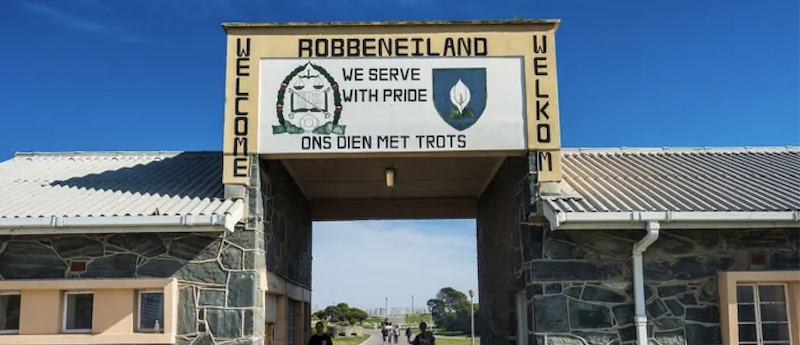A Brief History of Robben Island

The title of The Island is once simple and specific. The island in question is Robben Island, a centuries-old detainment center used for political prisoners (most famously, Nelson Mandela) in Apartheid-era South Africa. It is a physical manifestation of state-sanctioned cruelty, existing at the edge of the world where only birds can come and go as they please.
Here, we share a brief history of Robben Island and its role in the Apartheid system to provide context for Gabrielle Randle-Bent‘s solo directorial debut at Court, The Island, onstage from November 11 – December 4.
What is Apartheid?
Apartheid refers to the institutionalized system of racial segregation in South Africa that lasted from 1948 until the early 1990s. Under Apartheid, South Africa’s majority Black population was unjustly ruled by a white minority. Black citizens had their rights stripped away; were socially and legally treated as second-class citizens; and were subject to near-constant police harassment, arrests, and surveillance. For more information about Apartheid in South Africa, check out this article from the History Channel.
What is Robben Island?
Robben Island is an island located approximately 5 miles off of mainland South Africa. The island itself is small, with an approximate area of 5 square miles. The name, “Robben Island”, comes from the Dutch word for “seals” (“zeehonden”), as seals were once common in the surrounding waters.
Encyclopaedia Britannica
Originally a Dutch settlement and later a British penal colony, Robben Island served many purposes throughout its history. Between the 17th to the 20th century, it had been (most famously) used as a prison, a hospital for those deemed “socially unfit” or “socially undesirable”, and a military base. In The Island, the audience is transported to Robben Island under Apartheid, when it was used by the white minority ruling-class – the Afrikaners – as a maximum-security prison to house, isolate, and punish political dissidents. This is where we meet John and Winston.
What Happened to Robben Island After Apartheid?
Apartheid ended in the early 1990s, and the last prisoners on Robben Island were released in 1991. After that time, it continued to serve as a medium-security prison until 1996. In 1997, it was declared a national monument and was transformed into a museum that still welcomes visitors today. Oftentimes, tours to Robben Island feature tour guides who were either former prisoners on Robben Island themselves or former guards. In 1999, Robben Island was declared a UNESCO World Heritage Site.